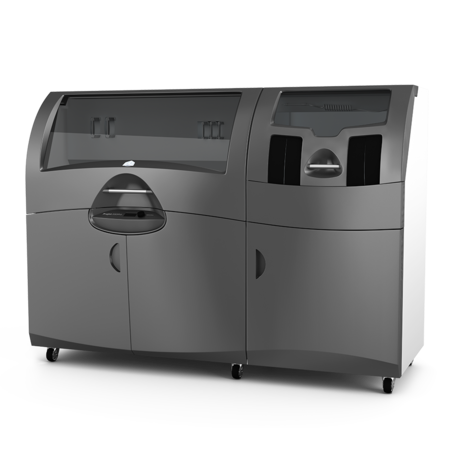"With sophisticated engineered shoe lasts, digital shoe models and the technology that brings everything together 3D printing we're evolving from the best shoemakers in the world into the best innovators in the world..." – Ross Authers, Digital Development Manager, Clarks
The shoe is an ancient artifact, at least 9,000 years old. Not surprisingly, the industry around it is bound in tradition, partly because it's hard to automate what is essentially a craft. Clarks, however, has bucked tradition by creating digital shoe prototypes, reaping huge productivity gains and positioning itself for an industry breakthrough.
Challenge
Gain A Competitive Advantage
The traditional approach to designing shoes, which lives on at many manufacturers today, begins with hand sketches on paper. Teams review and revise the drawings several times over until product managers approve the concept. During this time, upper materials are sourced before the designs go to a shoe factory, which in most cases will be overseas. The factory will manufacture the samples and return them in two or three weeks. Designers and product managers reconvene to review the samples, inevitably requesting modifications, ordering more samples, and repeating the cycle until they're satisfied.
If this sounds time-consuming (and expensive) in an industry of rapidly shifting tastes, that's because it is.
Strategy
Full Automation
To speed things up and cut costs, Clarks has thoroughly modernized this process. Building on years of investment in process and people, the company has now added digital shoe design and automated prototyping to its existing digital outsole and last design (lasts are the foot models from which shoes are made) to create a world-leading 3D conceptual development process. "Our level of engineering detail, combined with 185 years of manufacturing heritage, lets us take the whole process much further," says Clarks Digital Development Manager, Ross Authers.
After an initial paper sketch, designs are quickly moved to state-of-the-art 3D computer-aided design (CAD) software, making them simple to modify on the fly. When product managers are happy with an on-screen concept, they ask for a physical prototype.
Now, instead of halting the review process for up to three weeks, a Clarks digital engineer simply clicks "print" and produces a prototype in the head office using full-color ProJet® 3D printing technology.
Results
Time & Money Savings and Improved Quality
"Rather than wait two to three weeks for a costly prototype to arrive, we now have a full, multi-color prototype in our hands in a day," says Authers. "We save a lot of time and money both in production and shipping. This more efficient process also enhances the quality of the final shoe, which the consumer receives much earlier in the fashion life cycle."
A crucial part of the design review is holding the actual physical 3D printed model in your hands. Although you can rotate a 3D computer model virtually on the screen, it's nothing like scrutinizing the physical model.
"When you rotate a model on screen, you're doing it in an artificial way from a single, fixed point of reference," says Authers. "You miss the subtle visual changes that occur as real light glances off different parts of the model at different angles, and as your hand moves naturally. When you're holding a shoe model in your hand, your eyes are constantly moving, and the shoe seems to almost change shape as you turn it. This matters because, as you'll notice, there's not a single straight line on a shoe. You need to see it in three full dimensions." In the UK, Clarks prints one or two full-color models per day, not including the wildly popular miniature shoe models for marketing and sales. And while it used to take months to go from concept to approved product, Clarks' new automation strategy can be used to shrink that cycle time to weeks ideal when the pressure is truly on. Once a product is approved it can be reprinted in other locations around the world, adding further time and cost savings.
"With sophisticated engineered lasts, digital shoe models and the technology that brings everything together 3D printing we're evolving from the best shoemakers in the world into the best innovators in the world," says Authers. "We can respond to the market faster than ever, and faster than our competitors, allowing us time to experiment with designs we would not normally achieve. These advantages are helping us expand our business into new market segments and territories. We're on the verge of a revolution of efficiency and approaching the reality of 'fully engineered' shoes. Although we have 185 years in a 9,000-year-old industry, it feels like a new dawn."
